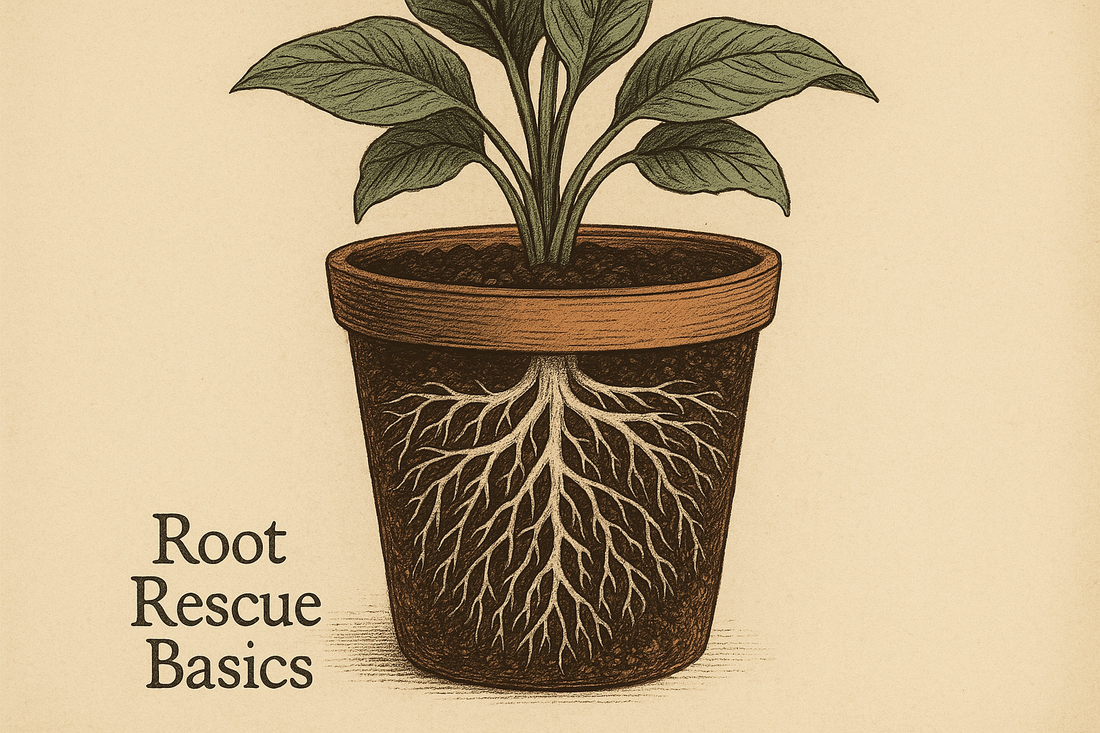
Healthy Roots, Happy Plants: A Practical Guide for Houseplant Owners
Why start underground?
A shelf full of glossy leaves may look reassuring, yet below the pot rim roots handle every critical job: drawing water, unlocking nutrients, and sending chemical signals that direct growth. When roots stall, foliage loses color, new shoots shrink, and even perfect light cannot save the show. The sooner you look beneath the surface, the easier the fix.
What healthy roots actually do
- Water management. Fine hairs act like straws that regulate uptake. Damaged hairs let soil stay wet yet the plant still droops.
- Nutrient exchange. Roots release acids that free minerals. If microbial life falls, this exchange slows. Fertilizer may be present but remains locked in the mix.
- Chemical messaging. Hormones produced at the root tip tell stems when to grow and leaves when to thicken. Distorted tips equal confused tops.
Four clues your plant is in trouble
- Roots circle the pot wall or poke from the drain hole.
- Soil stays damp for three days, yet leaves wilt by afternoon.
- Feeder roots look brown or feel slimy a few hours after watering.
- A pale crust forms on the soil surface, showing unused salts are building up.
Any single clue means root function is slipping. Two or more call for action right away.
Two-step rescue plan with carbon and kelp
Step 1 — Restore the food web
Mix Doonbeg 3-0-2 at 0.5 tablespoon per quart of water. Kelp extracts supply natural growth regulators, and molasses feeds dormant microbes. Pour enough to moisten the root zone, then wait seven days.
Step 2 — Stimulate new feeder roots
Dilute RhizoCarbon 2-0-5 at 0.5 tablespoon per quart. This low-nitrogen blend adds soluble carbon and potassium that fuel root tip expansion without forcing leggy top growth. Water thoroughly, let excess drain, then repeat every third week while new white roots appear.
Quick timetable
| Week | Action | Result you should see |
|---|---|---|
| 1 | Doonbeg soil drench | Leaves perk up. Soil smell turns earthy. |
| 2 | No feed, light watering as needed | Top growth pauses while roots recover. |
| 3 | RhizoCarbon drench | New white roots at pot edge. Deeper green on older leaves. |
| 6 | Resume normal feeding | Steadier growth and fewer droopy afternoons. |
Myth check
“More nitrogen fixes droopy leaves.”
Extra nitrogen can push soft foliage that demands even more water. If roots are stressed, the new growth simply collapses. Treat the root zone first; nitrogen can wait.
“Repotting always solves root problems.”
Moving to a larger pot helps only when the plant is root-bound. If roots are rotting or soil biology is poor, repotting spreads the problem to fresh mix. Clean up the existing root zone before considering a bigger container.
Strong roots give every care step—light, pruning, even the occasional vacation watering mistake—more margin for error. Check for those four warning signs this weekend, run the two-step routine, and watch how quickly a plant rewards attention where it matters most.
